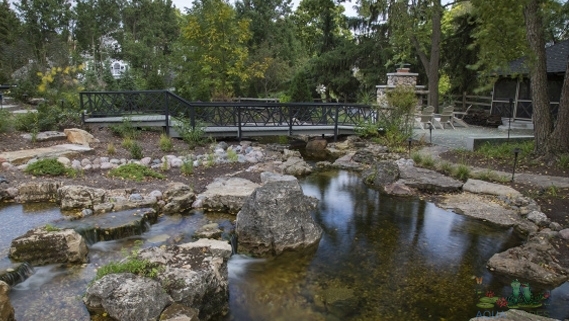How To Choose The Correct Pond Pump
Choosing a pump for your pond or fountain is a crucial step to ensure you maintain proper water movement. Failure to keep the water adequately circulated can result in stagnation, algae buildup, and mosquitoes. In addition, if you have fish, plants, or other aquatic life in your pond, you must keep the water healthy by evenly distributing the oxygen levels and other nutrients.
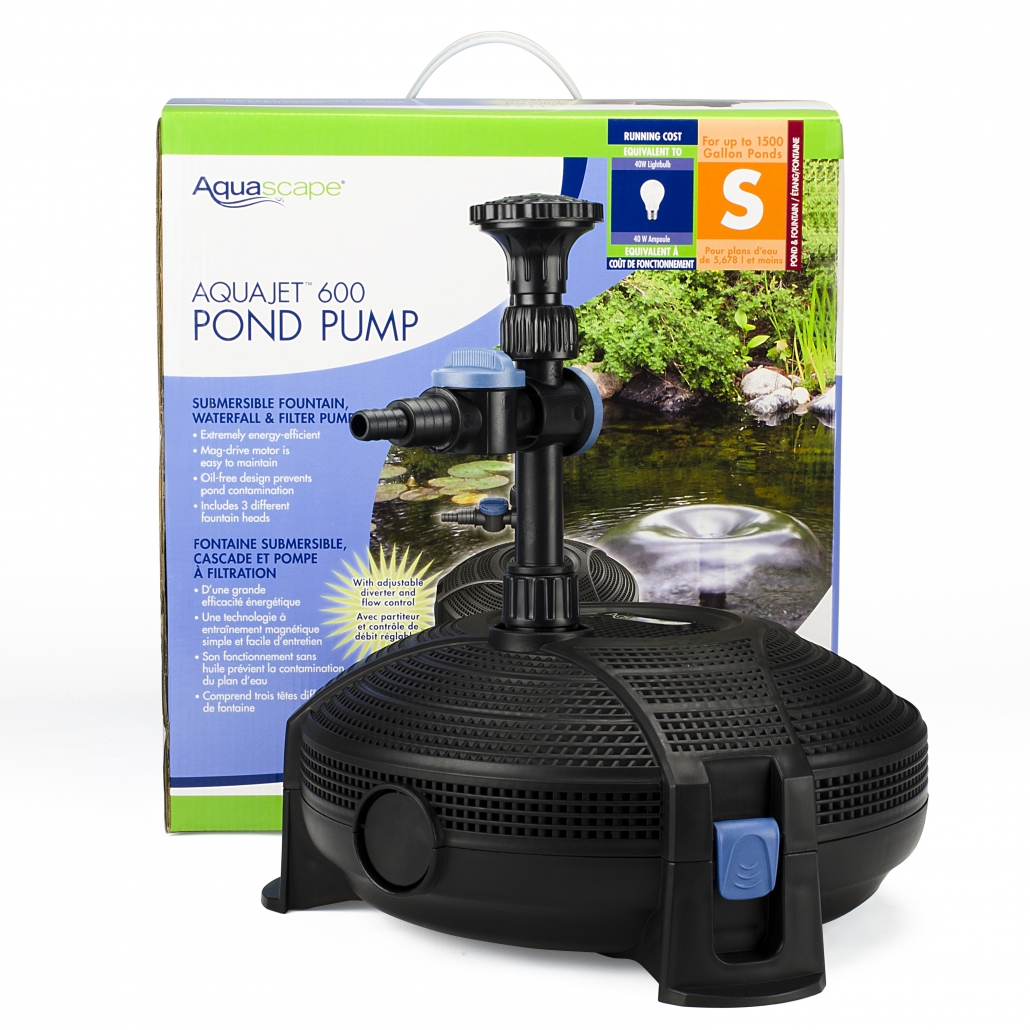
Types of Pond Water Pumps
There are two main types of pond water pumps: submersible and external (out-of-pond), also known as centrifugal pumps. Depending on the application, each pump offers specific advantages.
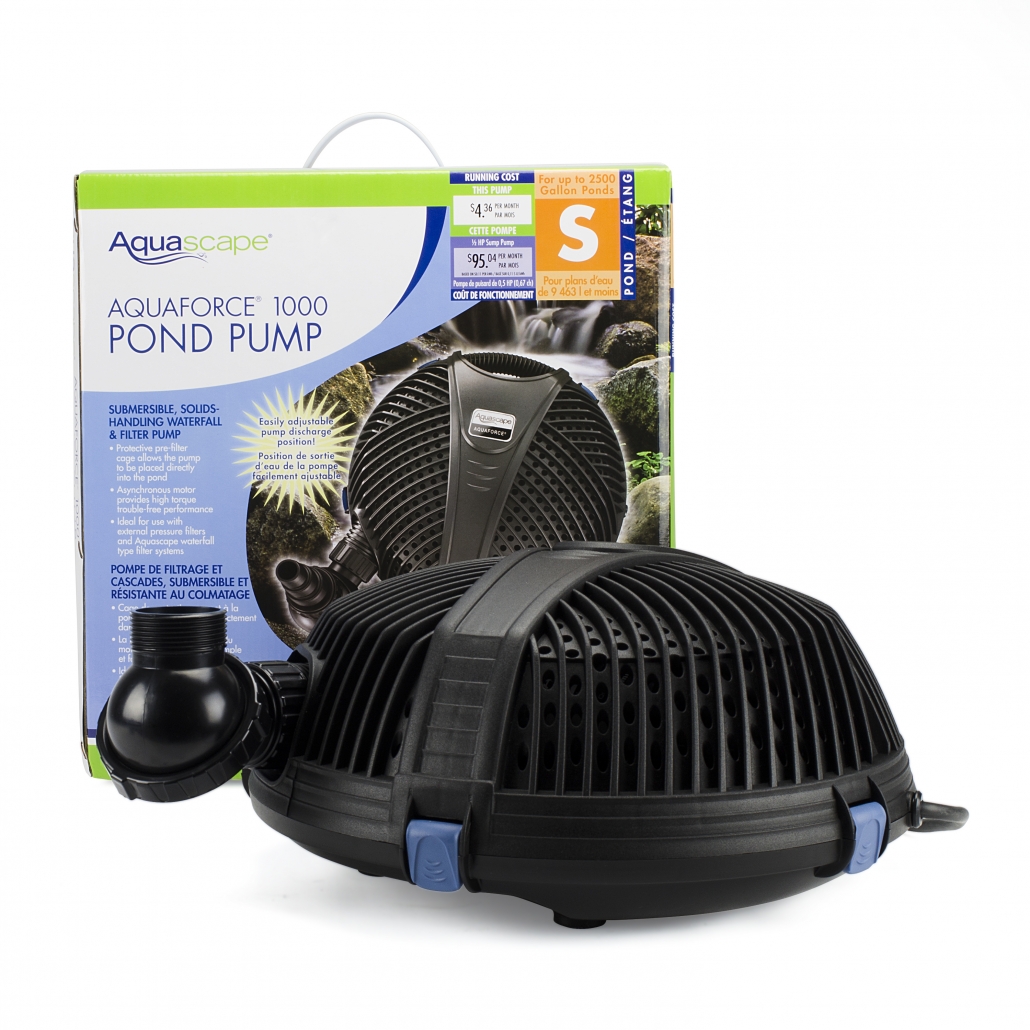
Submersible Pond Pumps
Submersible pumps are designed to be fully submerged underwater at the deepest part of the pond. They are placed directly into your pond or in a skimmer box or pond vault. Submersible pumps range in size from 50 to 5,000 gallons per hour. They are easy to install and are sometimes a more economical solution for smaller ponds (up to 1000 gallons of water). They are also quiet and can also be used to drain your pond. If you have fish or other aquatic life in your pond, you may want to consider a model that does not use oil because there is a danger of the pump seal breaking and oil coolant leaking into the water.
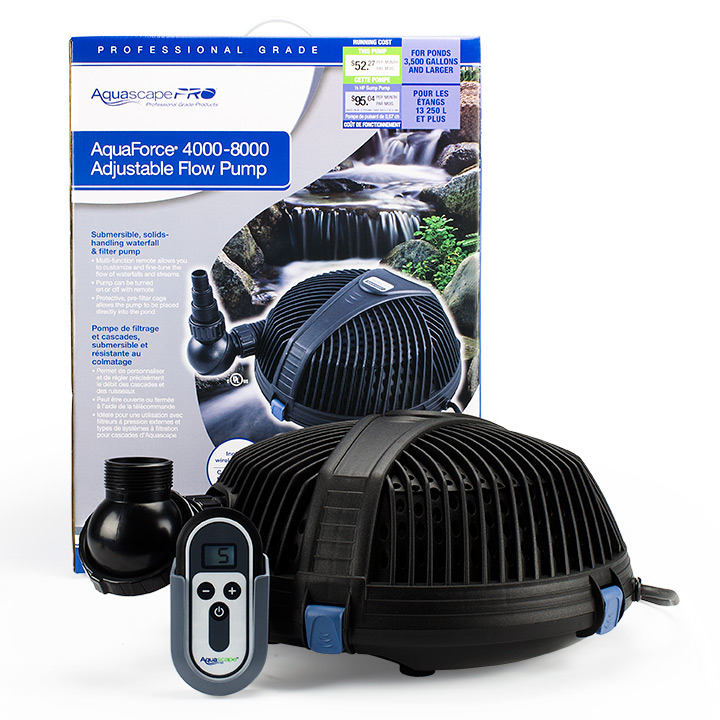
Centrifugal Pond Pumps
External or centrifugal pond pumps are a reliable, energy-efficient option. They are installed in a dry location near your pond. External pond water pumps are suitable for larger ponds (over 1000 gallons). Compared to a submersible pump, they are typically louder and more complicated to install; however, they are easier to maintain.
When selecting a pond pump, it’s essential to keep in mind that pumps have different cord lengths. Ensure the cord is long enough to go through the pond and plugin far away from the water. Some electrical codes specify that the outlet for water features must be at least 6 feet away from the water. Therefore, it is recommended that you avoid using an extension cord. However, if you must use one, make sure it’s suitable for outdoor use and plugged into a ground fault circuit interrupter (GFCI) so that it will immediately shut off if there is an overload.
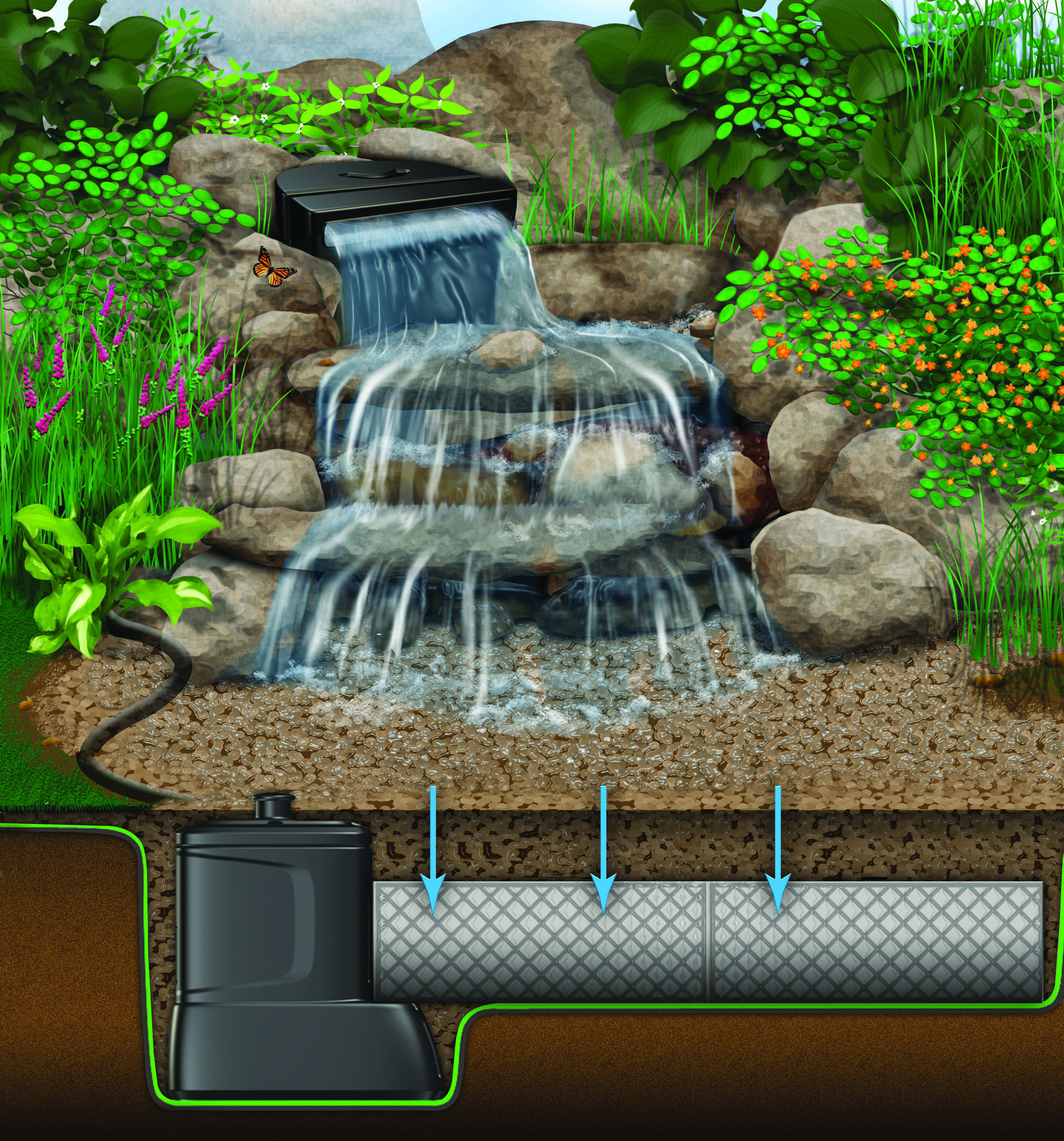
How to Size a Fountain or Pond Pump
Pond pumps are sized by gallons per hour (GPH) at one foot of lift or height. Larger capacity pumps are rated by horsepower (HP). To determine the size pond pump, first, you need to calculate the volume of water in the pond. To calculate the volume of water in gallons, multiply the length x width x average depth x 7.5.

Water Circulation Factors
It is recommended that pond water is circulated at least once per hour. For example, if you have a 500-gallon pond, you need a pump that runs 500 gallons per hour at the discharge height. If your pond has a pressurized filter, you ideally want to turn the water approximately once every two hours. For example, if you have a 1000 gallon pond, you need a pond pump rated at a minimum of 500 GPH. If your pond has a skimmer or waterfall, the water should be turned approximately once every hour. Therefore, if you have an 1800 gallon pond, you will need an 1800 GPH rated pump.

Calculating Head and Lift Height
Two of the most critical measurements in sizing a pond or fountain pump are the maximum head height rating and maximum lift. Head height means the vertical height the pump raises water above the surface of the pond. The pond fountain pump’s top height can lift the water to is called “Maximum Head” or “Max Head.” The “Head” is measured straight up from the water level of the pond. Its length then measures any horizontal/diagonal flow, and 1’ of “Head” added per 10’ of horizontal/diagonal distance. To calculate the lift, you need to measure how far the water in your fountain has to travel from the pump’s location in your rush to the top of the fountain where the water comes out. Then you need to select a pump that lifts higher than that measurement. For example, if that distance is 24”, than you will need a fountain pump that lifts at least 36” tall. The “maximum lift” is the maximum height that the pump will raise the water.
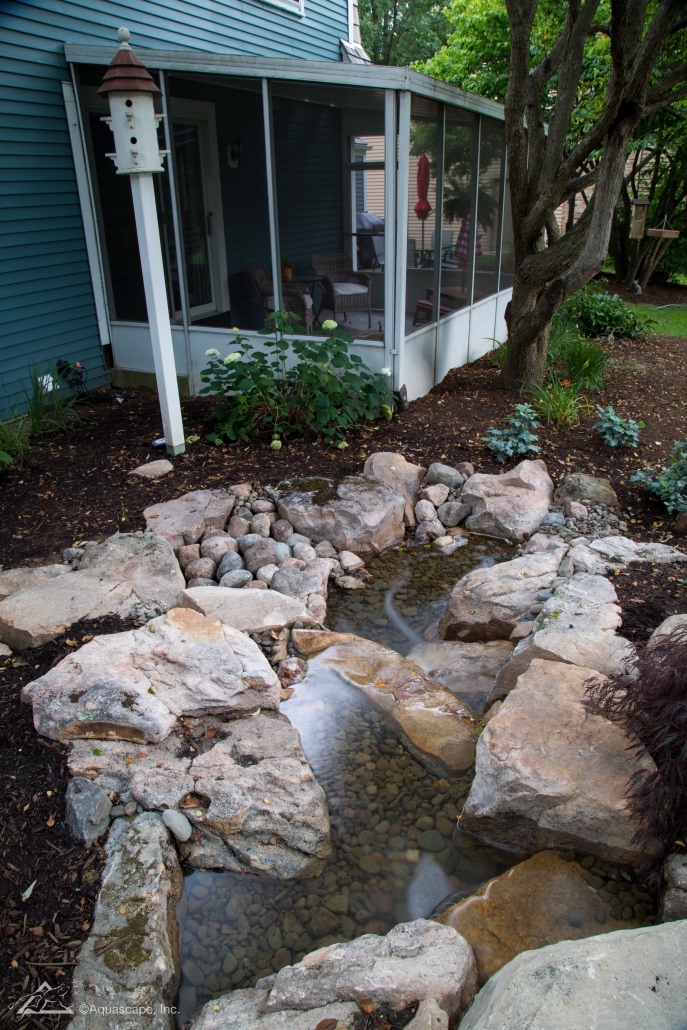
Selecting the Proper Pond Water Pump Tubing
It is also essential to use the correct tubing size because it directly affects the pond pump’s maximum lift capability. If you use smaller tubing than specified, you will limit the pump’s maximum lift and the amount of water circulated.
Choosing the right pond water pump for your pond or fountain requires careful consideration and a little upfront research. However, doing so will go a long way toward keeping your water clean and healthy and your pump operating efficiently.
Swimming Pond Water Quality
Swimming ponds, often referred to as natural swimming ponds, blend the allure of a traditional pool with the ecological balance of a natural aquatic environment. Achieving optimal water quality in these ponds is essential to ensure they remain both safe for swimmers and healthy for the surrounding ecosystem. Here’s a look at the key parameters and practices to maintain ideal water quality for a natural swimming pond. 💧
A Natural Balance
Unlike chemically treated pools, natural swimming ponds rely on biological processes to maintain water quality. They typically incorporate a regeneration zone filled with aquatic plants and beneficial microorganisms that help filter impurities and control algae. This design not only keeps the water clear but also supports a self-sustaining ecosystem, reducing the need for artificial chemicals.
Key Water Quality Parameters
1. Clarity and Turbidity:
Clear water is crucial for both safety and aesthetics. Turbidity should be minimal so that swimmers can see the bottom, ensuring the pond is free of hidden hazards. Regular monitoring of turbidity levels using water testing kits helps you detect issues before they become problematic.
2. pH Levels:
The pH of a natural swimming pond should ideally remain between 7.0 and 7.5. This neutral range is comfortable for swimmers and optimal for the biological processes in the regeneration zone. Slight deviations can affect both the swimming experience and the health of aquatic life, so frequent pH testing is recommended.
3. Dissolved Oxygen:
A high level of dissolved oxygen is necessary for maintaining a balanced ecosystem. Good circulation, aided by energy-efficient pumps, ensures that oxygen is well distributed throughout the pond. This not only supports aquatic life but also helps maintain water clarity by promoting the breakdown of organic matter.
4. Nutrient Levels:
Nutrients like nitrates and phosphates can lead to excessive algae growth if they accumulate in high concentrations. It’s important to monitor these levels regularly. A balanced nutrient level supports healthy plant growth without causing algal blooms that can impair water quality and swimmer comfort.
5. Microbial Balance:
Maintaining a balanced microbial community is key in a natural swimming pond. Beneficial bacteria help break down organic waste and prevent the build-up of harmful pathogens. While natural processes usually manage microbial levels, periodic testing ensures that the balance remains healthy for swimmers.
Practices for Maintaining Water Quality
- Regular Testing: Use water testing kits to monitor pH, turbidity, dissolved oxygen, and nutrient levels. This regular oversight allows you to adjust the ecosystem before issues arise.
- Proper Filtration: A well-designed regeneration zone with a variety of aquatic plants acts as a natural filter. This zone should be sized appropriately in relation to the swimming area to effectively manage water quality.
- Maintain Circulation: Good water circulation prevents stagnation, which can lead to bacterial growth and reduced oxygen levels. Energy-efficient pumps help achieve consistent flow throughout the pond.
- Seasonal Adjustments: Natural ponds require different care throughout the year. During warmer months, increased evaporation and nutrient loading may necessitate more frequent testing and adjustments. In colder seasons, maintaining a gentle flow can prevent ice formation and ensure that the water remains oxygenated.
Final Thoughts
Creating a safe and inviting natural swimming pond hinges on maintaining balanced water quality. By carefully monitoring key parameters and embracing a design that fosters a natural filtration system, you can enjoy a refreshing swim while preserving the health of your pond ecosystem. With these practices in place, your natural swimming pond can become a beautiful, sustainable retreat that harmonizes with nature and provides endless enjoyment. 😊
Essential Pond Care Tips: Nurturing Your Aquatic Sanctuary
A thriving pond is not only a stunning focal point in your garden but also a living ecosystem that requires regular attention and care. Whether you’re a beginner or a seasoned pond keeper, following a few essential maintenance practices will ensure your pond remains clear, healthy, and inviting all year round. Here are some practical pond care tips to help you nurture your aquatic sanctuary. 💧
1. Regular Visual Inspections
The first step in proper pond care is to establish a routine of daily visual inspections. Spend a few minutes each day checking for signs of trouble such as excessive algae growth, debris buildup, or unusual water discoloration. These simple observations allow you to catch potential issues early before they escalate into bigger problems.
2. Maintain Water Quality
Water quality is the cornerstone of a healthy pond. Keep your water crystal clear by regularly testing key parameters such as pH, ammonia, nitrites, and nitrates. Most aquatic plants and fish thrive when the pH is between 6.5 and 7.5. Use a reliable water testing kit or digital meter to track these levels, and adjust as needed with natural or chemical treatments to maintain balance.
3. Ensure Adequate Filtration and Circulation
A well-functioning filtration system is vital for removing debris and maintaining a balanced ecosystem. Regularly clean your mechanical and biological filters to prevent clogs and reduce the risk of water stagnation. Coupled with energy-efficient water pumps, such as those in the Aquascape Ultra series, proper circulation promotes oxygenation, helps control algae, and supports beneficial bacteria that break down waste.
4. Manage Algae Growth Naturally
While some algae are natural, excessive blooms can cloud your pond and upset its balance. Incorporate aquatic plants like water lilies and pickerel rush, which provide shade and compete with algae for nutrients. Adding natural barriers such as barley straw can also help control algae growth without the need for harsh chemicals.
5. Seasonal Adjustments
Pond care must adapt to seasonal changes. During warmer months, increased evaporation and higher nutrient levels can lead to algae overgrowth. Increase water testing frequency and adjust your maintenance routine accordingly. In colder months, prepare your pond for winter by ensuring proper circulation to prevent ice formation that can damage your pond’s structure. Consider using aerators or heaters in regions where freezing temperatures are common.
6. Regular Maintenance of Equipment
Your pond’s pumps, filters, and other mechanical components are crucial to its health. Establish a schedule to inspect and service this equipment, replacing worn-out parts before they fail. A well-maintained system not only improves water quality but also extends the lifespan of your pond’s infrastructure.
Final Thoughts
Caring for your pond doesn’t have to be overwhelming. By adopting a proactive approach—conducting daily inspections, maintaining water quality, ensuring proper filtration, managing algae, and adapting to seasonal changes—you can create a sustainable and captivating aquatic environment. These essential pond care tips will help you enjoy a thriving water garden that brings beauty and tranquility to your outdoor space for years to come. 😊
Preventative Pond Maintenance: Protecting Your Aquatic Oasis
Preventative pond maintenance is the key to ensuring that your water garden remains a vibrant, healthy sanctuary throughout the seasons. By implementing proactive care routines, you can prevent major issues before they arise, reduce long-term costs, and create an environment that supports thriving aquatic life. Whether you’re a long-time pond keeper or just starting out, these practical tips will help you safeguard your aquatic oasis with minimal hassle. 💧
Regular Inspections: The First Line of Defense
A consistent routine of visual inspections is essential. Spend a few minutes each day scanning your pond for any obvious signs of distress—excessive algae buildup, debris accumulation, or unusual water color can be early indicators of imbalance. Regular observations not only catch minor issues before they escalate but also help you understand your pond’s natural rhythm. By keeping a maintenance journal, you can track changes over time and adjust your care routine accordingly.
Keeping Water Clean and Clear
Clear water is a hallmark of a well-maintained pond. Preventative measures like installing a high-quality filtration system and ensuring adequate water circulation are crucial. Mechanical filters capture debris and organic matter, while biological filters promote the growth of beneficial bacteria that break down harmful substances. Regularly clean these filters according to the manufacturer’s guidelines to maintain optimal performance. If your pond experiences seasonal changes, consider using a UV clarifier during peak algae growth periods to reduce unwanted blooms.
Maintaining Balanced Water Chemistry
Water chemistry plays a critical role in pond health. Regular testing of key parameters—such as pH, ammonia, nitrites, and nitrates—allows you to detect imbalances early. Aim to maintain a slightly acidic to neutral pH (around 6.5 to 7.5), which is ideal for most aquatic plants and fish. If tests reveal fluctuations, take corrective action promptly by adding appropriate buffering agents or water treatments. Consistent water quality not only supports aquatic life but also minimizes the risk of algae and bacterial overgrowth.
Routine Equipment Checks and Preventative Care
Your pond’s pumps, filters, and other equipment are the workhorses that keep your system running smoothly. Schedule regular maintenance checks to ensure these components are functioning correctly. Look for signs of wear and tear, and replace any parts that appear degraded before they fail completely. Routine care not only extends the lifespan of your equipment but also ensures that your pond’s ecosystem remains stable and balanced.
Seasonal Adjustments and Preparations
Seasonal changes can have a significant impact on pond health. In the warmer months, increased evaporation and higher nutrient levels can lead to rapid algae growth, while cooler temperatures may affect oxygen levels. Adjust your maintenance routines seasonally—such as increasing the frequency of water tests during the summer or preparing your pond for winter freeze protection—to keep your aquatic environment in equilibrium. Adding seasonal aquatic plants can also provide natural filtration and aesthetic enhancement.
The Benefits of a Preventative Approach
Adopting a preventative maintenance mindset saves you time, money, and stress. Regular upkeep minimizes the need for drastic, costly interventions later on and ensures your pond remains a stable, healthy habitat for both aquatic life and the visual enjoyment of your garden. It’s a proactive approach that not only protects your investment but also enhances the overall beauty and serenity of your outdoor space.
Final Thoughts
Preventative pond maintenance is all about staying one step ahead. By incorporating daily inspections, maintaining balanced water chemistry, keeping equipment in top condition, and making seasonal adjustments, you create a robust foundation for a thriving pond ecosystem. Embrace these strategies, and let your pond continue to be a source of relaxation and natural beauty for years to come. 😊

 Meyer Aquascapes
Meyer Aquascapes